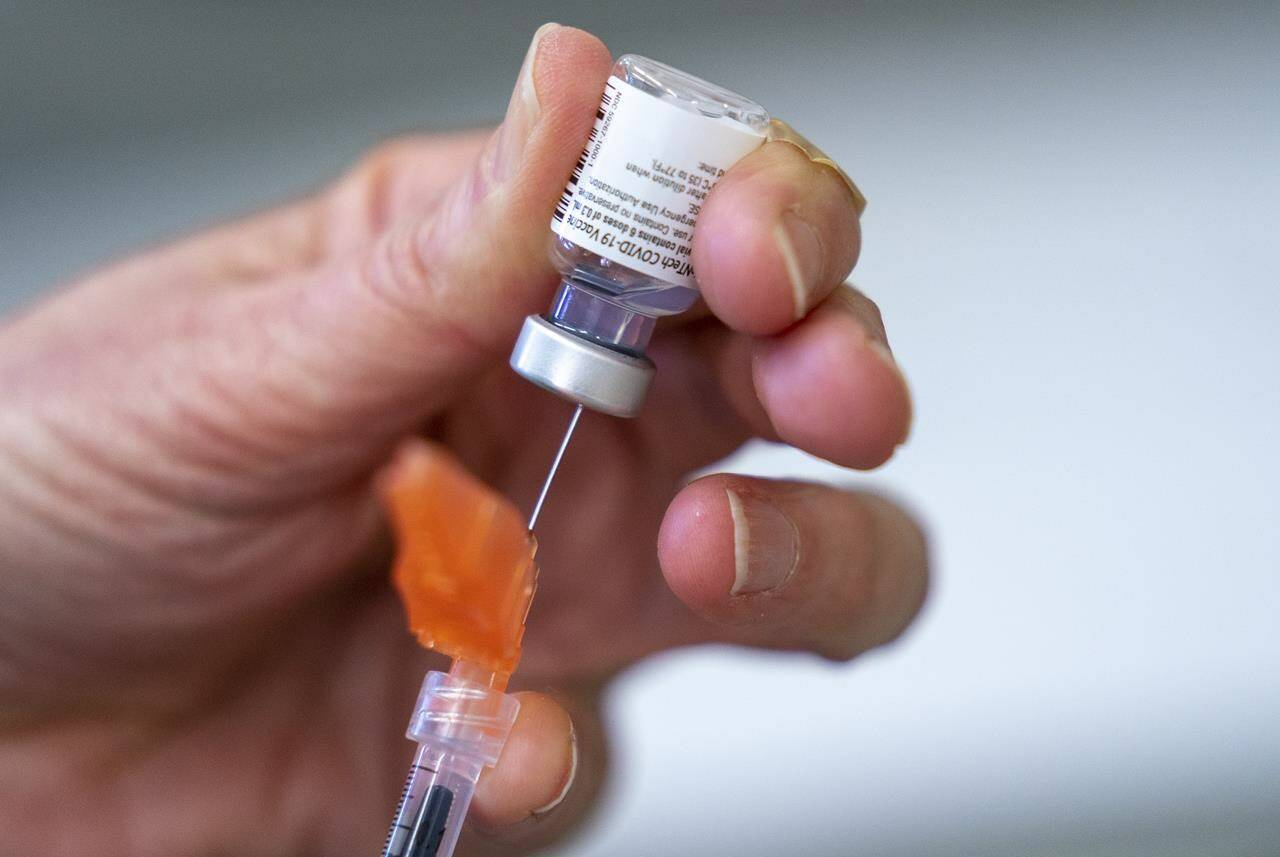B.C. Centre for Disease Control data shows that unvaccinated individuals are much more likely to become hospitalized and die as a result of COVID-19.
The age-adjusted data, which covers approximately the last four weeks, shows that unvaccinated individuals are nine times more likely to become a case (Sept. 21 to Oct. 18), 43 times more likely to become hospitalized and 36 times more likely to die (Sept. 18 to Oct. 15).
From Sept. 16 to Oct. 21, B.C.’s vaccination rate among eligible people increased from 86.3 per cent to 89.8 per cent for first doses and from 78.8 per cent to 84.4 per cent for second doses.

The B.C. CDC said that new hospital admissions are rising slowly, with the biggest increase in people ages 60-79 years old.
“Deaths are low, but slowly increasing, majority are in individuals ≥ 60 years,” the CDC data stated, adding that fatalities are slowly increasing across the province but that per capita deaths are highest in Northern Health, followed by Interior Health and Fraser Health.
Northern Health, Interior Health and the eastern part of Fraser Health are subject to additional COVID-19 restrictions due to high case counts and low vaccination rates.
From Oct. 13-19, daily per capita case rates have been highest in northern communities. The top five highest local health areas are Nisga’a, Upper Skeena, Nechako, Burns Lake and Peace River South with per capita case counts of over 20 per 100,000.
Vaccination rates in all five communities have consistently been below the provincial average. As of Oct. 26, Nisga’a had a two-dose vaccination rate of 82 per cent, Upper Skeena had a rate of 75 per cent, Nechako had a rate of 65 per cent, Burns Lake had a rate of 69 per cent and Peace River South had the lowest two-dose vaccination rate in all of B.C. at 56 per cent.

